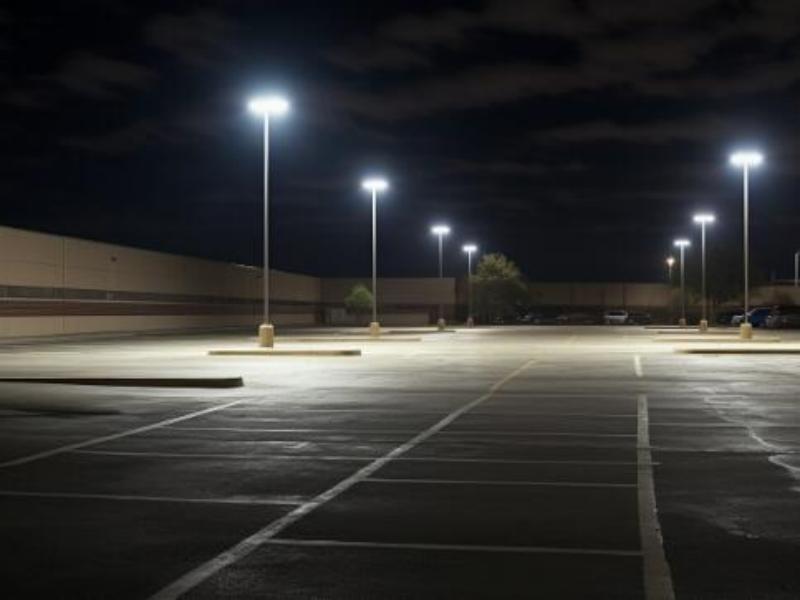When designing parking lot lighting, there are several important factors to consider. Proper lighting not only enhances the security of the area but also helps improve the overall aesthetics of the space. Whether it’s a small car park for a local store or a large parking facility in a commercial complex, the right lighting design can make a big difference. In this article, we’ll explore some of the key considerations for designing effective parking lot lighting.
First, it’s crucial to assess your parking lot’s specific needs and requirements. Factors such as venue size, layout, and the presence of any potential hazards or blind spots will all influence lighting design. Additionally, the level of security required for the area will also play an important role in determining the type and location of lighting fixtures.
One of the most important aspects to consider is the lighting level required. Not only do well-lit parking lots make it easier for drivers to navigate and find their vehicles, but they can also act as a crime deterrent. The Illuminating Engineering Society (IES) recommends minimum light levels for different areas in car parks. Perimeter areas and entry/exit points generally require higher light levels for enhanced security, while interior car parks may have slightly lower light levels. Understanding and implementing these guidelines is critical to effective lighting design.
Another consideration is the type of lighting fixture to be used. LED lighting is becoming increasingly popular in parking lot applications due to its energy efficiency and long life. LED fixtures provide high-quality lighting while consuming less energy, saving costs in the long run. Additionally, their durability and low maintenance requirements make them a practical choice for outdoor spaces such as parking lots.
When it comes to light fixture placement, a strategic approach is crucial to ensuring even light distribution throughout the parking lot. Pole-mounted luminaires are typically used to illuminate large areas and are positioned to minimize shadows and dark spots. Additionally, the orientation of light fixtures should be carefully planned to reduce glare and light pollution. Screening and directing light downwards helps minimize light spills and improves visibility for drivers and pedestrians.
When designing parking lot lighting, it’s also important to consider environmental impact. Implementing smart lighting controls, such as motion sensors or timers, can help reduce energy consumption by dimming or turning off lights when not needed. Additionally, choosing fixtures with high energy efficiency ratings and using renewable energy can further reduce the carbon footprint of your parking lot lighting system.
In addition, the aesthetics of the parking lot cannot be ignored. Well-designed lighting can enhance the visual appeal of a space while providing users with a sense of security and comfort. Choosing lamps with modern and stylish designs can create a modern and warm atmosphere.
Finally, regular maintenance and upkeep of your lighting system is critical to ensuring its long-term effectiveness. Regular inspection, cleaning, and replacement of any damaged or faulty light fixtures is essential to maintaining lighting quality. Monitoring energy consumption and performance can also help identify areas for improvement and optimization.
In summary, designing parking lot lighting requires careful consideration of factors such as lighting levels, fixture type, placement, energy efficiency, environmental impact, aesthetics, and maintenance. By taking a comprehensive approach to lighting design, parking lot owners can create a safer, more secure, and more visually appealing environment for drivers and pedestrians. Ultimately, a well-designed lighting system helps improve the overall functionality and appeal of your parking lot.
If you are interested in parking lot lighting, welcome to contact TIANXIANG to read more.
Post time: Jan-24-2024

